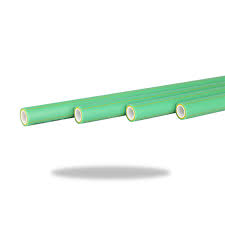Nov . 11, 2024 20:12 Back to list
hdpe pipe for sewer line service
Understanding HDPE Pipe for Sewer Line Service
High-Density Polyethylene (HDPE) pipes have become a popular choice for sewer line installations due to their numerous advantages over traditional materials. This article explores the key benefits, applications, and installation practices associated with HDPE pipes for sewer line service.
What is HDPE?
High-Density Polyethylene is a thermoplastic polymer produced from the polymerization of ethylene. This material is known for its high strength-to-density ratio, making it exceptionally durable and resistant to a range of environmental conditions. In the context of sewer systems, HDPE pipes stand out for their ability to handle waste materials effectively, making them ideal for both residential and commercial applications.
Advantages of HDPE Pipes for Sewer Lines
1. Corrosion Resistance One of the primary benefits of HDPE pipes is their resistance to corrosion. Unlike traditional materials like iron or PVC, HDPE does not rust or corrode, ensuring a longer lifespan even in harsh sewage environments. This inherent resistance significantly reduces maintenance costs over time.
2. Flexibility and Durability HDPE is a flexible material, which allows for easy installation in various soil types, including rocky or uneven terrain. Its flexibility also allows it to withstand environmental stresses, such as ground movement and shifting, reducing the risk of cracks and breaks that can lead to costly leaks.
3. Chemical Resistance Sewer lines often carry a variety of chemicals and pollutants. HDPE's excellent chemical resistance makes it suitable for transporting a diverse range of waste materials without degrading. This feature ensures that the integrity of the pipe remains intact over years of use, further extending its service life.
4. Lightweight and Easy to Handle HDPE pipes are significantly lighter than traditional materials, which not only simplifies the handling and transportation of the pipes but also reduces installation costs. Fewer personnel and resources are required for handling, leading to faster and more efficient project completions.
5. Joint Integrity The fusion welding techniques employed in HDPE pipe installations create strong, monolithic joints that are leak-proof. This characteristic is crucial for maintaining the sanitary conditions of sewer lines and preventing any potential environmental contamination.
6. Sustainability HDPE is recyclable, making it an environmentally friendly choice for sewer systems. Using recycled materials in HDPE pipes reduces the carbon footprint associated with their production and promotes sustainability in infrastructure development.
hdpe pipe for sewer line service

Applications of HDPE Pipes
HDPE pipes are widely used not only for sewer lines but also for stormwater management, drainage systems, and even potable water services. Their versatility allows engineers and contractors to employ them across various projects, facilitating a more integrated approach to civil engineering.
In sewer line applications, HDPE pipes are particularly advantageous for trenchless installations. Techniques like Horizontal Directional Drilling (HDD) allow for the installation of pipes with minimal ground disruption, preserving existing landscapes and infrastructure while also providing an efficient solution to pipeline installation.
Installation Practices
When installing HDPE pipes for sewer line service, certain best practices should be followed to ensure optimal performance
1. Proper Sizing Selecting the appropriate pipe diameter based on the expected flow rate is crucial. Engineers should consider not only the current demands but also potential future growth when sizing the pipes.
2. Quality Jointing Employing appropriate methods for joining HDPE pipes, such as butt fusion or electrofusion, is essential for creating strong, leak-proof joints. Training personnel in these techniques can mitigate installation issues.
3. Trench Preparation If trenches are required for installation, ensuring proper bedding and backfill is critical. The trench should be clean and free of sharp objects that could damage the pipe during installation.
4. Regular Inspections Routine inspections are a must after installation to ensure that no damage occurred during the process and that the system is functioning as intended.
Conclusion
HDPE pipes offer numerous benefits for sewer line service, making them a preferred choice among contractors and engineers alike. Their durability, flexibility, and resistance to corrosion and chemicals make them suitable for varied applications, including residential, commercial, and industrial sewer systems. By understanding the advantages and best practices associated with HDPE pipes, stakeholders can maximize the effectiveness and sustainability of their sewer infrastructure projects. As technology advances and the demand for reliable wastewater management systems increases, HDPE will likely continue to play a crucial role in modern engineering solutions.
-
High-Quality PVC Borehole Pipes Durable & Versatile Pipe Solutions
NewsJul.08,2025
-
High-Quality PVC Perforated Pipes for Efficient Drainage Leading Manufacturers & Factories
NewsJul.08,2025
-
High-Quality PVC Borehole Pipes Durable Pipe Solutions by Leading Manufacturer
NewsJul.08,2025
-
High-Quality PVC Borehole Pipes Reliable PVC Pipe Manufacturer Solutions
NewsJul.07,2025
-
High-Quality UPVC Drain Pipes Durable HDPE & Drain Pipe Solutions
NewsJul.07,2025
-
High-Quality Conduit Pipes & HDPE Conduit Fittings Manufacturer Reliable Factory Supply
NewsJul.06,2025

